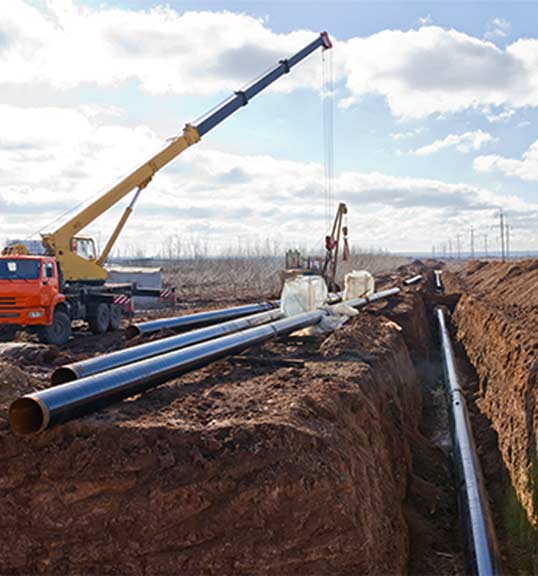The Emerald Surf Condominium is a low rise, 5 stories, 45 unit condominium located on the Gulf of Mexico in Navarre Beach, Florida. It is approximately 15 years old. The framework of the structure consists of reinforced steel concrete columns and beams supporting post-tensioned concrete floor slabs. The east and west concrete sheer walls are veneered with decorative wood facing. In 1995, numerous stalactites on the underside of the common walkways were observed during an engineering study investigating the cracking and spalling of the concrete. It was determined that these stalactites were the result of minerals bleeding through cracks and pores in the concrete due to a constant supply of moisture from the environment.
The cantilevered concrete slabs, which make up the common walkways and private balconies, are constructed with post-tensioned cables that run completely through the slab from the front walkways to the Gulf-side balconies, and from end to end of the structure. The cables are on approximate 3-foot centers with some additional concentration in load bearing areas. The purpose of these cables is to strengthen the concrete the same way conventional steel reinforcing rebars provide strength. These cables are stressed to approximately 33,000 pounds per square inch according to the 1995 engineering report. The critical live end anchor pockets for the post-tensioned cables occur along the slab edge with 2 standard reinforcing steel rebars that act to restrain the anchors during the stressing operation.
It was reported in the 1995 and 1996 engineering consultant’s reports that spalling and cracking of the concrete and corrosion stains (iron oxide) on the concrete surface were observed. It was determined that the spalling and cracking of the concrete were caused by corrosion of the embedded steel members. The corrosion was attributed to chloride contamination in the concrete, which was enhanced by the lack of concrete coverage of the steel. The depth of coverage was observed to be less than 1.5 inches in many areas. As a result of the engineering reports, a program of concrete restoration and post-tensioned cable repair was initiated in 1997. It was determined from the engineering study that a minimum of 20 post-tensioned cables would require reconditioning. and approximately 75 percent of the pull anchor ports would require repairs. The building had lost 4 of the post-tensioned cables due to corrosion, and there was a concern for additional failures if the corrosion process was not stopped. In addition, a solution to solve the ongoing corrosion problem was needed to ensure a continued long life for the existing reinforcing steel and post-tensioned cables.
After investigating numerous corrosion mitigation systems available for the reinforcing steel and post-tensioned cables, it was determined that cathodic protection offered the most economical and technically reliable method available. Both impressed current and galvanic cathodic protection systems were investigated to determine which type of system would offer the optimum performance for this application. The impressed current system was eliminated due to the concern of hydrogen embrittlement of the post-tensioned cables, higher maintenance costs, and the requirement for continuous AC power supply. In addition, the galvanic system selected had been installed on a similar post-tensioned structure on the Gulf Coast, and there was engineering data indicating the system was effective in mitigating corrosion.
The concrete restoration and cable rebar repairs were completed prior to the cathodic protection installation, and electrical continuity was determined for the reinforcing steel and all the post-tensioned cables. At those locations, where discontinuities existed, metal to metal connections was made by the cathodic protection contractor using a proprietary system. After all, structures were bonded together electrically, the complete structure was checked again for electrical continuity to ensure that all reinforcing steel and post-tensioned cables were electrically continuous. The design of the cathodic protection system called for installation of a zinc galvanic anode system on the slab edge of the balconies on the south and west ends of the building. The zinc anode system used consisted of a sheet of zinc foil coated with an ionically conductive hydrogel pressure sensitive adhesive (electrolyte). The anode system was electrically connected to the reinforcing steel and the post-tensioned cables with the proprietary connection system.
The installation of the cathodic protection system was completed in April 1997. The cathodic protection system was commissioned by a Association for Materials Protection and Performance (AMPP*) corrosion specialist in April 1997. At that time, tests were performed to determine the effectiveness of the cathodic protection system. These tests and measurements were performed on each slab edge on every floor of the condominium. The criteria used to determine the effectiveness of the cathodic protection system was a minimum of 100 millivolt depolarization, which is recommended by AMPP*. These criteria were achieved at 100 percent of the test locations, indicating the system was operating effectively.
As a result of this installation, the Emerald Surf Condominium should have many years of corrosion free life for the post-tensioned cables. In addition, this corrosion abatement system offers an economical solution for the mitigation of corrosion of post-tensioned type construction which did not exist before. Of even more importance is the fact that the effectiveness of the corrosion mitigation system can be determined in real time measurements, and the user no longer has to wait for cracking and spalling of concrete to occur before realizing that the corrosion is taking place.
- The Association for Materials Protection and Performance (AMPP), was formerly known as the National Association of Corrosion Engineers (NACE)





